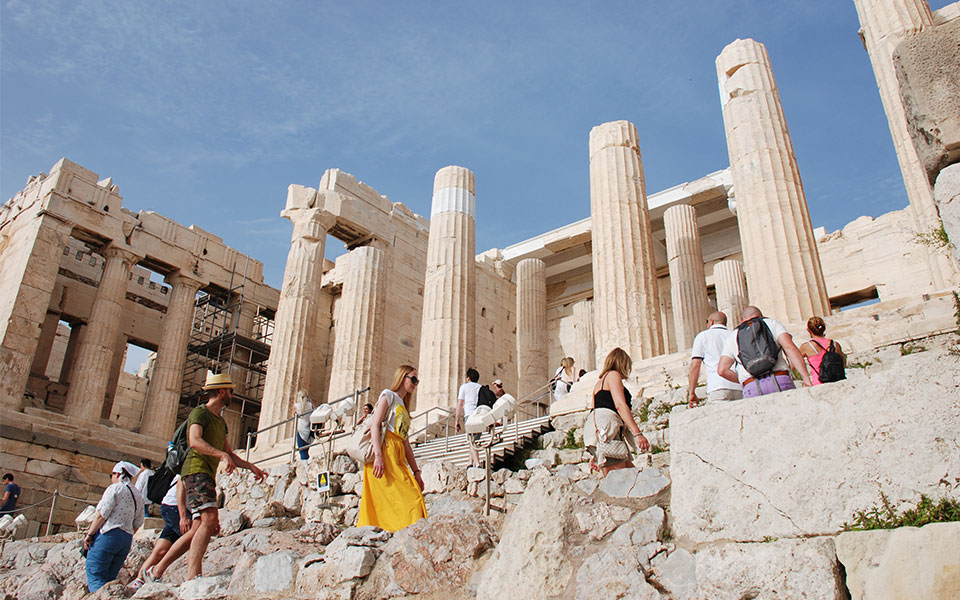“The Acropolis is a testament to the incredible achievements of ancient Greek civilization and their enduring legacy,” Ivanka Trump wrote yesterday on her Instagram account, under a series of photos with the Acropolis in the background. The daughter of Donald Trump visited the Sacred Rock with her husband Jared Kushner, and joined the thousands of famous and lesser-known visitors who have flocked to the see the ancient monuments this year.
According to the visitor data provided to Kathimerini, the month of April closed for the Acropolis with visitor numbers approaching those of August 2019, translating on average from 16,000 to 17,000 visitors on a daily basis. Even for the Sacred Rock, which attracts visitors from all over the world, these numbers induce smiles but also headaches for the Greek Ministry of Culture, as it’s estimated that traffic in August 2023 will be much higher.
Δείτε αυτή τη δημοσίευση στο Instagram.
A tourist explosion is expected throughout the country in the coming months, as many foreign airlines, from Kazakhstan to Seoul, connect with Athens, while Aegean will offer the largest flight program in its history this summer. Add to this equation the cruise ships with tourists disembarking at the port of Piraeus, heading to Athens city center and the Acropolis, and you have a picture of this summer in the capital.
The increasing number of visitors is expected to create the familiar queues outside the entrance of the Propylaea. It is a long-standing issue, primarily due to the congregation of large tourist groups in the morning hours instead of spreading them throughout the day. In addition to the groups are individual visitors, families, and smaller groups of tourists. The queues had noticeably decreased during the pandemic years, but this year tourism has rebounded and bigger groups have been appearing much earlier in the year.
Managing the large volume of visitors is not an easy task, as the morphology of the Acropolis and the current layout of the site allow for the use of only one entrance for visitors, resulting in chronic congestion. To address this phenomenon, the Management and Development Agency of Cultural Resources of the Ministry of Culture intends to introduce “visitor zones” on a pilot basis from this summer for individual visitors.
The Ministry of Culture’s plan is currently in the final stages of development and is very likely to be implemented in June, to be tested on individual visitors and later applied to large groups. The visitation zones will appear upon the issuance of the electronic ticket, and visitors can “book” their visit for a specific time (it remains to be clarified whether it will be one or two hours). The success of the measure will be assessed by the services of the Management and Development Agency of Cultural Resources (ODAP) and interventions will be made to improve it as needed so that later – presumably from the next tourist season – it can be extended to organized groups of tourists.
It would be desirable to apply the visitation zones as is done in large monuments worldwide, so that there is a distribution of visitors throughout the day, but also to create a new visitor culture so that both those traveling from far to experience the Acropolis and those working on it both benefit.
This article was previously published in Greek at kathimerini.gr












